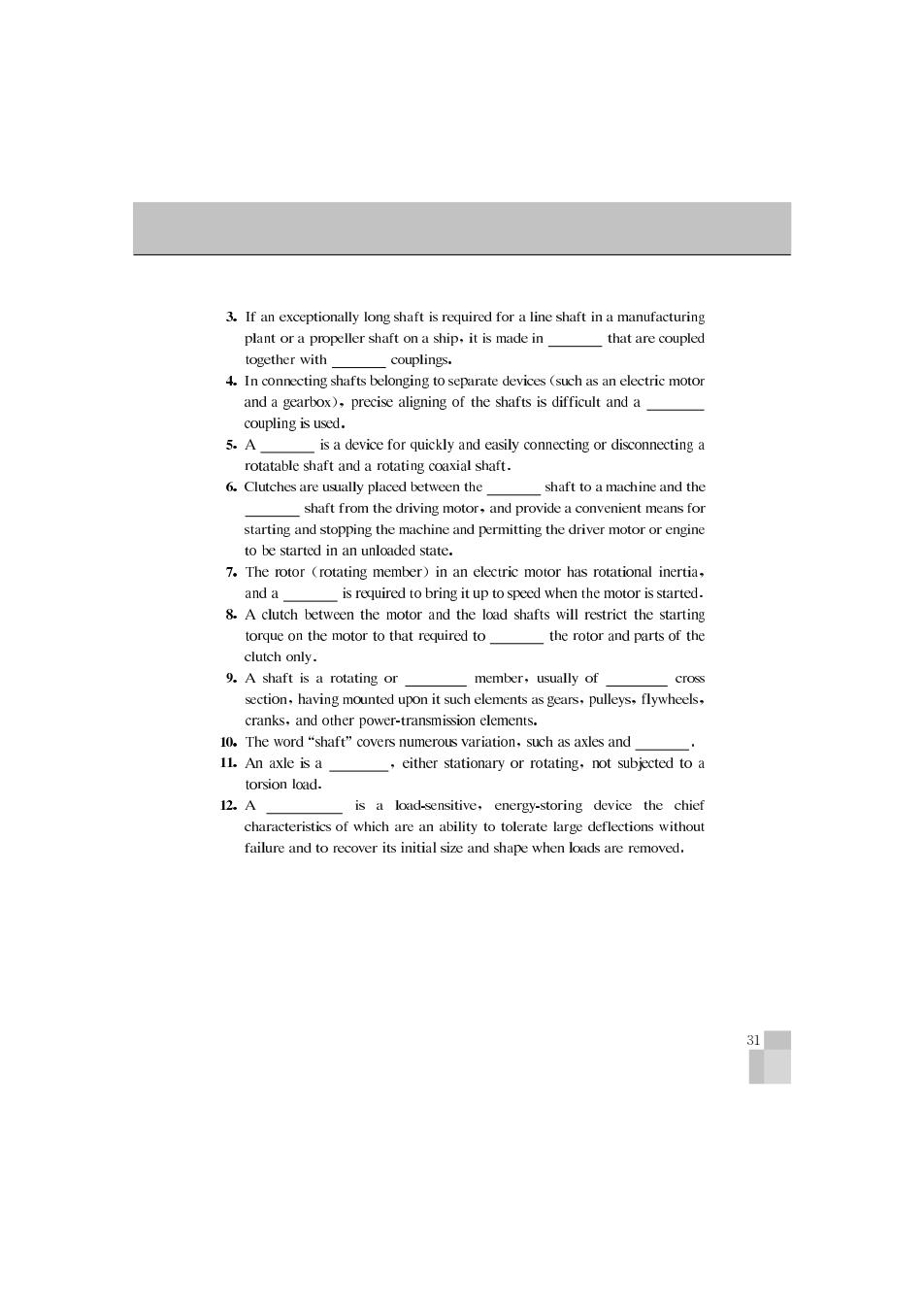
is made in .aselonteevicelctrie moto and a gcarbox).procise aligning of the shafts is difficult and a coupling is used. 5.A is a device for quickly and casily connecting or disconnecting a rotatable shaft and a rotating coxial shaft. 6.Clutches are usually placed between the a convenient means to hine and permitting thedriver motoror engine in an electri a ctor is strict the starting torquc on the motor to that rquired to the rotor and parts of the clutch only. 9.A shaft is a rotating o member,usually of section,having mounted upon it such elements as gears,pulleys.flywheels. cranks,and other power-transmission clcments. .cither stationary or rotating.not subjected to a storing device the chief characteristics of which failure and to recover its initil size
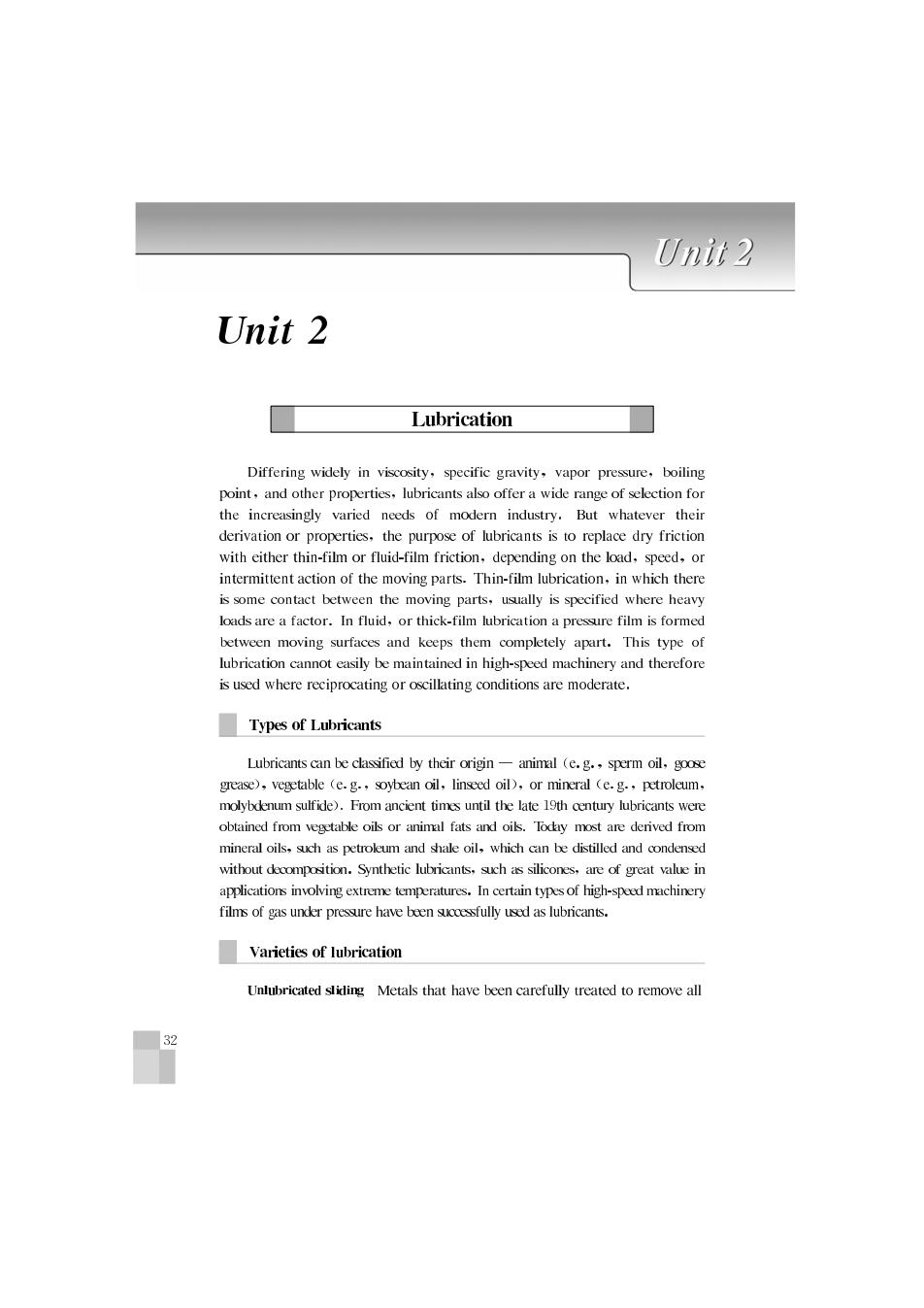
0ni证2 Unit 2 Lubrication But derivation or r with either thin-film or fluid-film friction.depending on the lod.speed.or intermittent action of the moving parts.Thin-film lubrication.in which ther is some contact between the moving parts.usually is specified where heavy lodsare a factor.In fluid,or thick-film lubrication a presure film is formed between moving surfaces and keeps them completely apart.This type of lubrication cannot eily be maintained in high-speed machinery and therefore is used where reciprocating or oscillating conditions are moderate. ■Types of Lubricants animal (e.g.sperm oil,goo (e.g.sobean oil,linseed oil e.g., om ancient times until the ntury lu mineral oils d ail.which shys in films of gas undr presure have ben ussfully ud as lubricants. Varieties of lubrication Unlubricated siine Metals that have been carefully treated to remove al
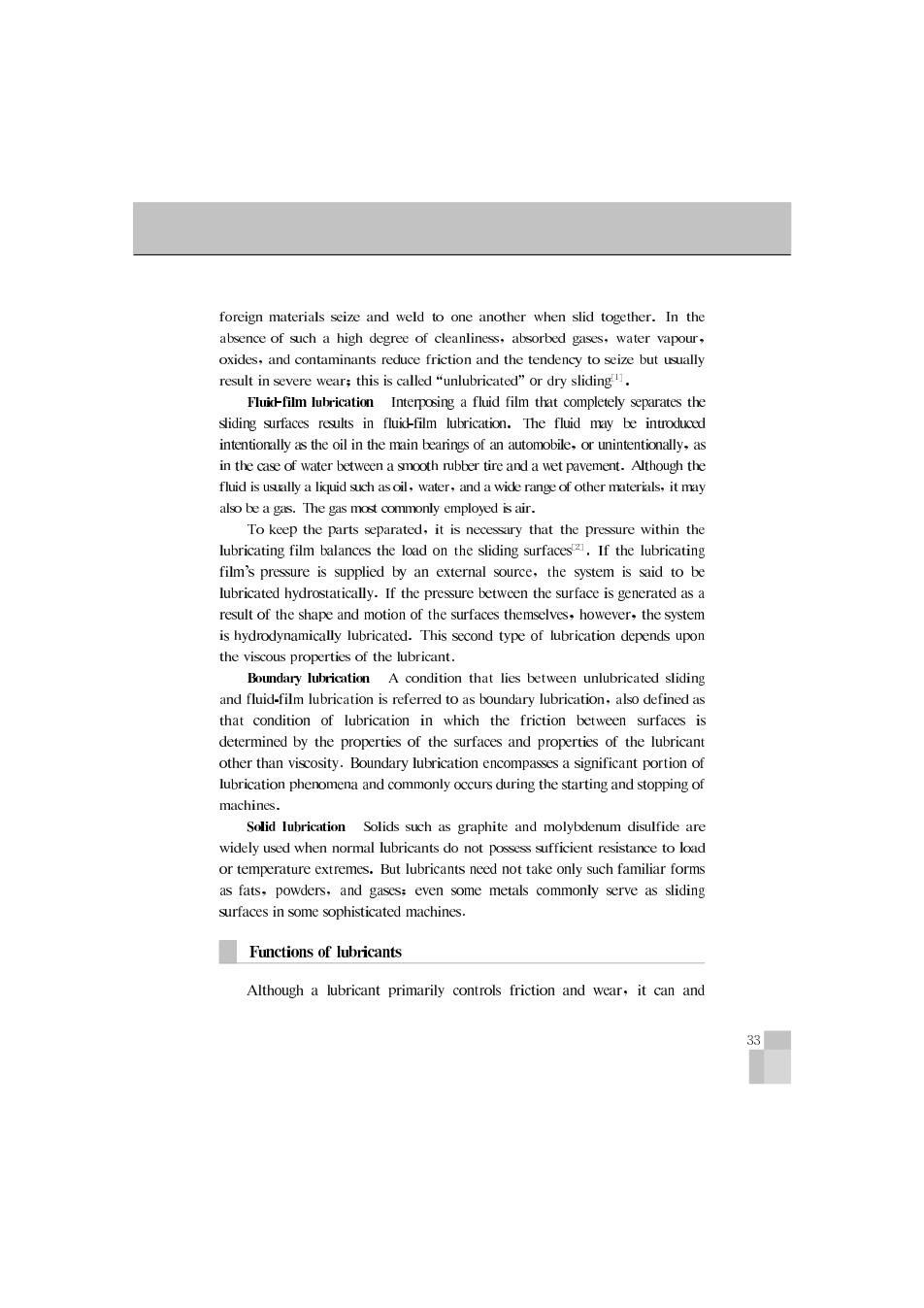
result in severe wears this is called"unlubricated"or dry sliding Fuid-film lubrication Interposing a fluid film that complctcly separates the siding surfaces results in fluid-film lubrication.The fluid my be introdued intentionally s the oil in the main bearingsofr unintentionally.as in the case of water between a smooth nubber tire and a wet pavement.Although the fluid a liquid hs oil,water,and a wide other materials,it may also be a ga mmonly employed is air ry that the pr ult of the shane and motion of the surfaces themealves.bow the st is hydrodynamically lubricated.This sccond type of lubrication depends upo the viscous properties of the lubricant. Boundary lubrication A condition that lies between unlubricated sliding and fluid-film lubrication is referred toas boundary lubrication.ao definedas that condition of lubrcation in which the friction between surtaces is letermined by the properties of the surfaces and properties of the lubrican other than viscosity dary lubrication cr a significant portiono brtonpkeonmaandomoaocoundningtestarningandopingo widely used when ts do or temperature extremes.But lubricants need not take only such familiar forms as fats.nowders.and gases even some metals commonly serve as sliding surfaces in some sophisticatod machines Functions of lubricants Although a lubricant primarily controls friction and wear,it can and
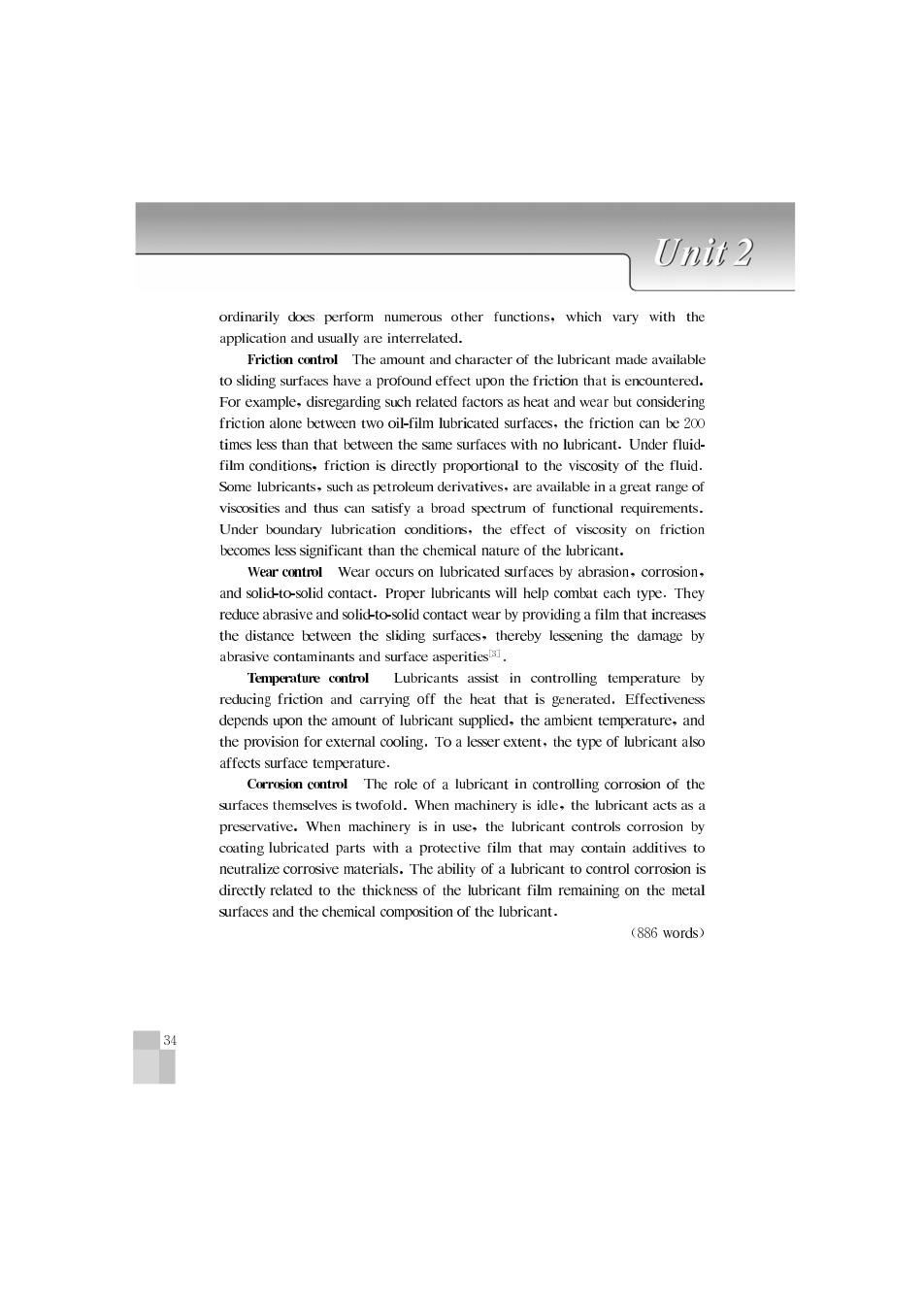
0ni证2 e e other functions, which vary with the For examnle.disregarding such related factors as beat and wear but considerin friction alone between two oil-film lubricated surfaces.the friction can be 20 times lss than that between the same surfaces with no lubricant.Under fluid film conditions,friction is directly proportional to the viscosity of the fluid. Some lubricnts,such as petroleum derivatives,are available ina greatrane of viscositics and thus can satisfy a broad spectrum of functional rquirements Under boundary lubric tion conditions,the effe of viscosity on frictior ecomes less d of the ts will duce abrasive and olid the distance bety ning the damaee by abrasive contaminants and surface asperities 3 Temperature control Lubricants assist in controlling temperature by reducing friction and carrying off the heat that is generated.Effectiveness depends upon the amount of lubricant supplicd.the ambient tempcrature,anc the provision for exteral cooling.To a lesser extent.the type of lubricant also affects suface temperature Corrosion contro oe of a lubricant in of the faces thems the I in additive sion is directly related to the thickness of the lubricant film remaining on the metal surfaces and the chemical composition of the lubricant. (886 words)
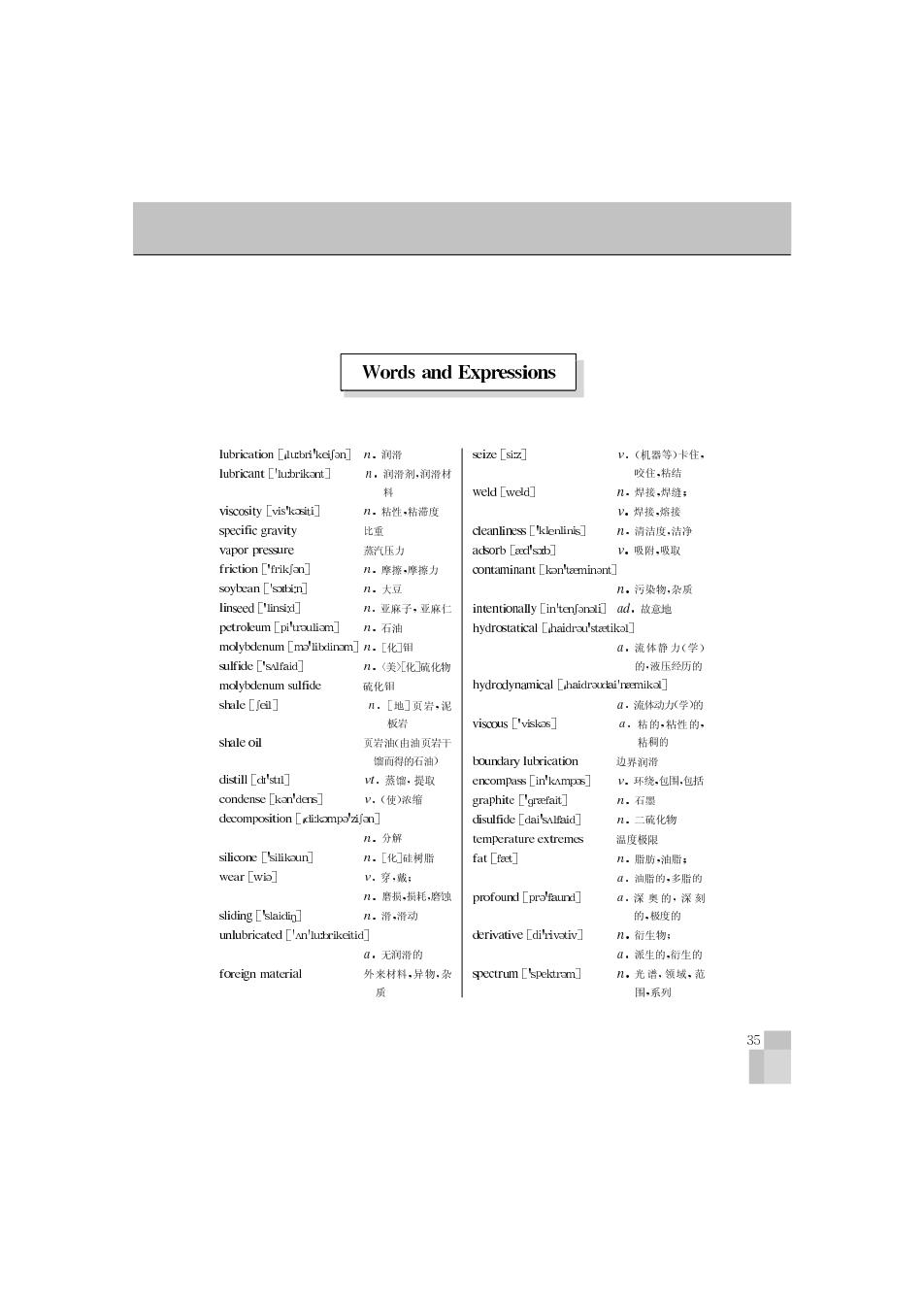
Words and Expressions scine [s] ,(机器等)卡位 weild [wcld] .能时。 viscosity n。粘件,粘猫度 ,标授,烤援 比重 frikction 。摩摩擦力 soybean ['sin] n,大日 n。污染物,杂 a,流体静力(学 n,《美[化硫化物 的:液压舒历的 流化部 VisCOus「'los1 、粘的性的 shale oil 边 distill [a'sm] ,者的,提 Lin'kAm ps] [n' graphite 月.石圈 Ld 二疏化物 silicone ['silikoun] .[化树盾 fat] wear [wio] V,穿 4.袖看的,多后的 derivative [di'rivxiv] 。生物】 4无的 ,坐的,尘的 5